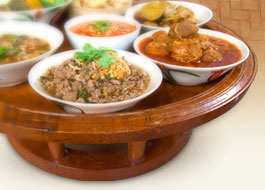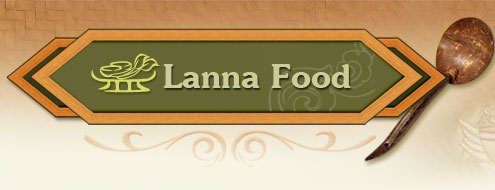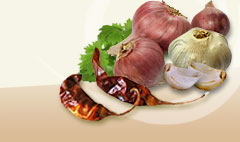Coconut |
|
|
 | Cocos Nucifera Linn. |
|
| |
 | Palmae |
|
| |
 | Coconut Palm |
|
| |
 | Ba pao, ma pao (Northern), phrao (Southern), mak phrao, mak un, dung (Chanthaburi), het dung (Pethcabun), kho sa (Karen-Mae Hong Song), phon (Karen-Kanchanaburi), yo (Malay) (Kanchana Diwiset, et al., comp., 1999, p. 201) |
|
| |
 | Tree, 20-30 m. high. Leaves in a terminal crown, pinnate; leaflets lineaer-landeolate, green, leathery, 2-3 ft. long, 1-2.5 in. wide. Infloreacence paniculate, axillary, male flowers above the females, 6 petals. Drupe round or oval with leathery epicarp, broad fibrous mesocarp and stony endocarp which contains a single large albuminous seed, a fluid and a white fleshy endosperm. (Kanchana Diwiset, et al., comp., 1999, p. 201) |
|
| |
 |

00 gm. gives 55 kilocalories of energy, protein 1.6 gm., fat 2.0 gm., carbohydrates 7.7 gm., calcium 13 mg., phosphorus 173 mg., iron 1.0 mg., Vitamin A 25 IU, Vitamin B1 0.06 mg., Vitamin B2 0.04 mg., niacin 1.3 mg. and Vitamin C 4 mg. (Priya Trairatnarong, 2004, p. 103). The core from the top of the stem is included in soup or fried. The young fruit contains a sweet fluid which makes a delicious drink and the meat is grilled to make ho mok maphrao. The young inflorescence produces a sweet fluid that is made into sugar, liquor starter and vinegar. Oil extracted from the dried meat is a butter substitute. Coconut milk is used in curry and desserts (Kanchana Diwiset, et al., comp., 1999, p. 201). Lanna people use its tender shoots to make kaeng ok pao. |

The bark is burned to obtain the ashes used to reduce toothache and itchy skin. Coconut oil from grated mature coconut meat boosts stamina, is a diuretic, expels worms and reduces fever. Coconut juice is a good laxative, diuretic anti-toxicant, anti-diarrhea, thirst quencher, and relieves gallstones, stops vomiting blood. Coconut oil is put on a wound or burn caused by hot water and is also a tonic. (Kanchana Diwiset, et al., comp., 1999, p. 201) |
|
| |
 | All year round |
|
| |
 |
Kanchana Diwiset et al., comp. (1999). Phak Phuen Ban Phak Klang. Kanchana Diwiser, ed. Nonthaburi: Project for Text Development, Institute of Traditional Thai Medicine. (in thai). Priya Trairatnarong. (2004). Khamphi Phaet Samunphrai, Phonlamai, Samunphrai Lae Phuet Phak Suan Khrua. Bangkok: One World. (in thai). |
|
| |
|
|




